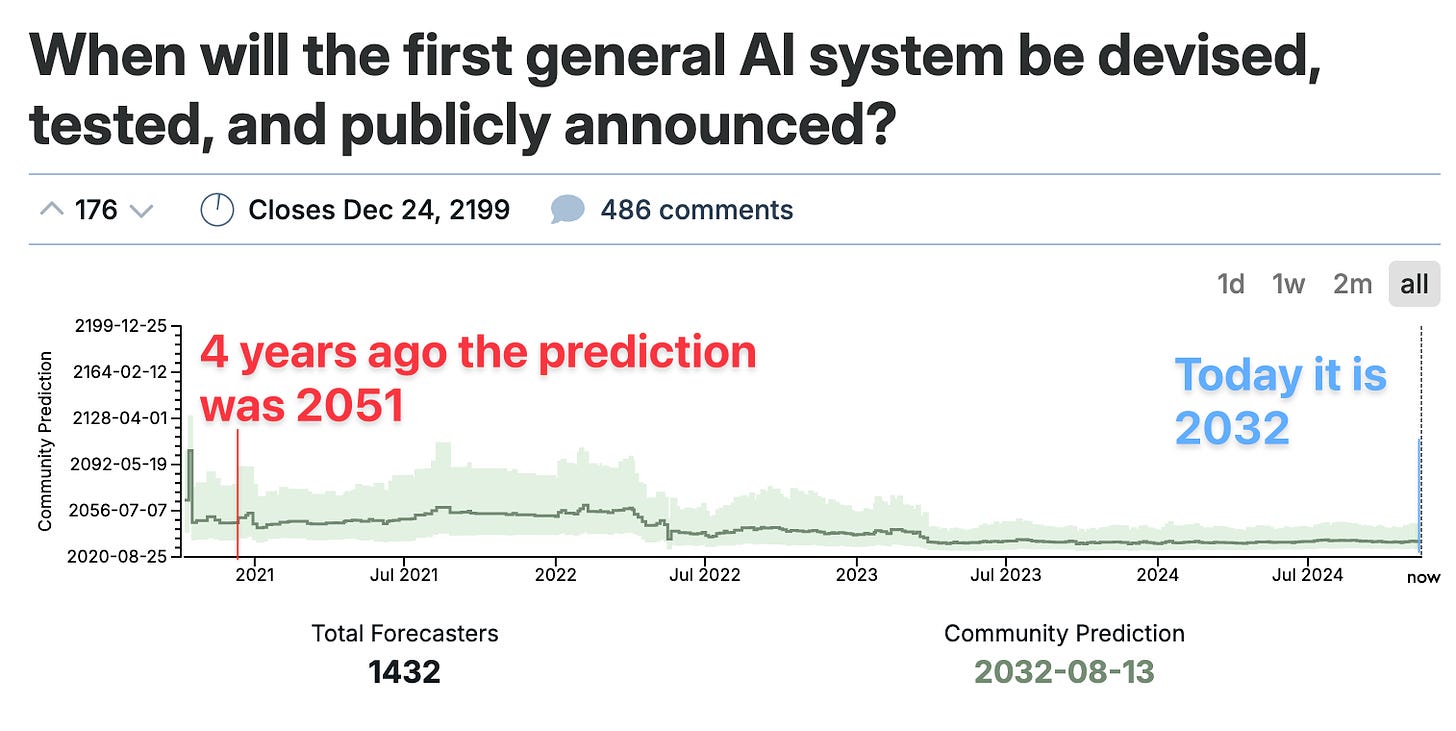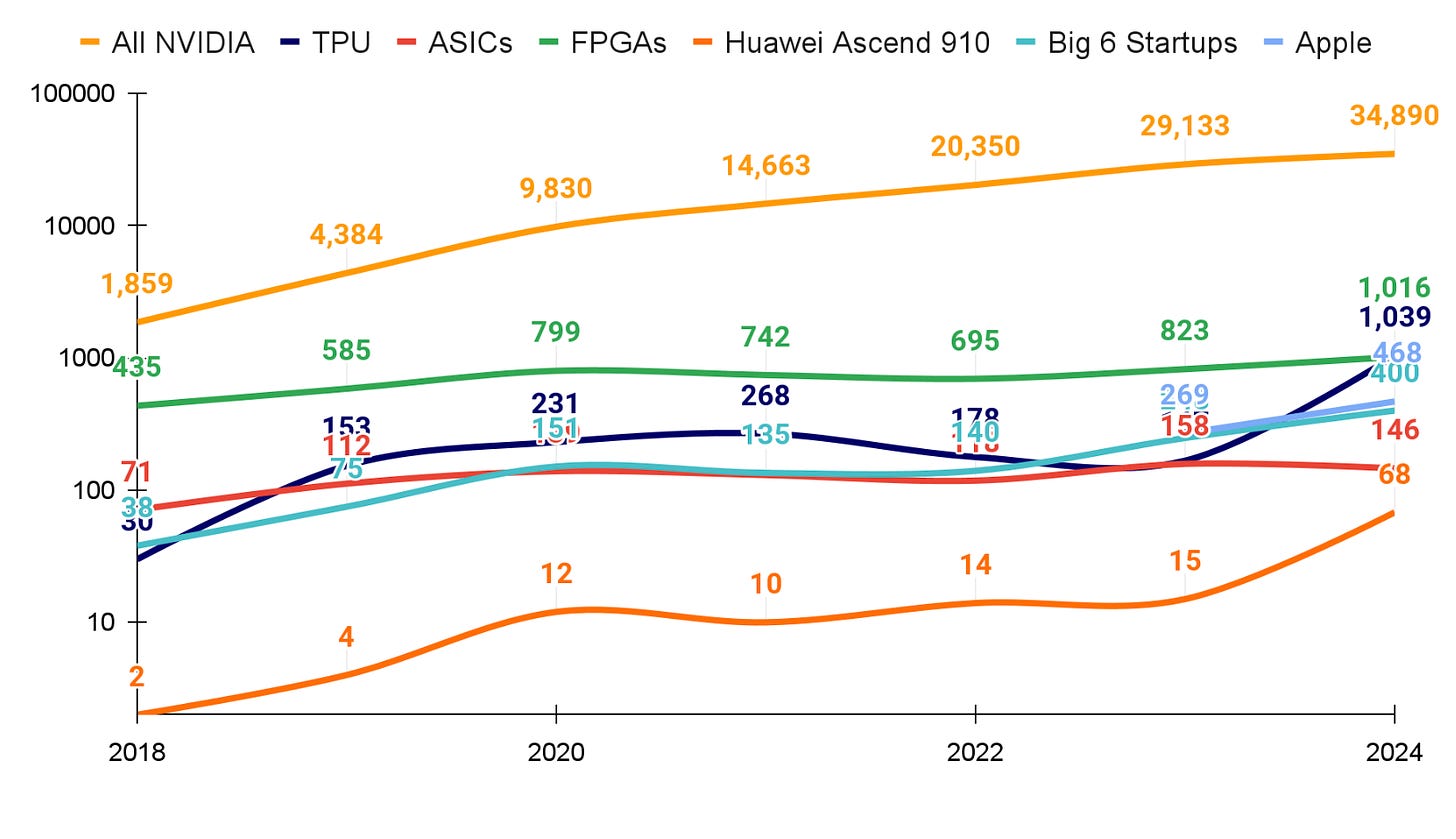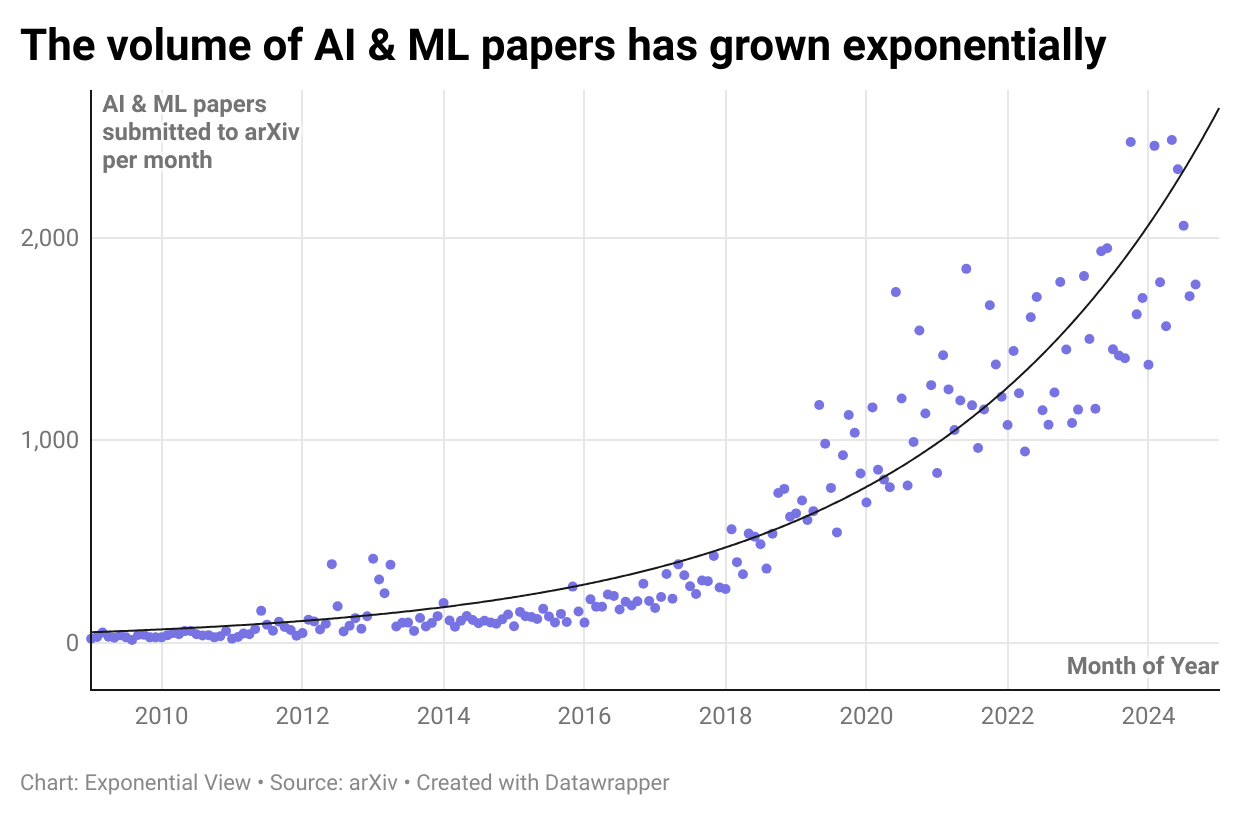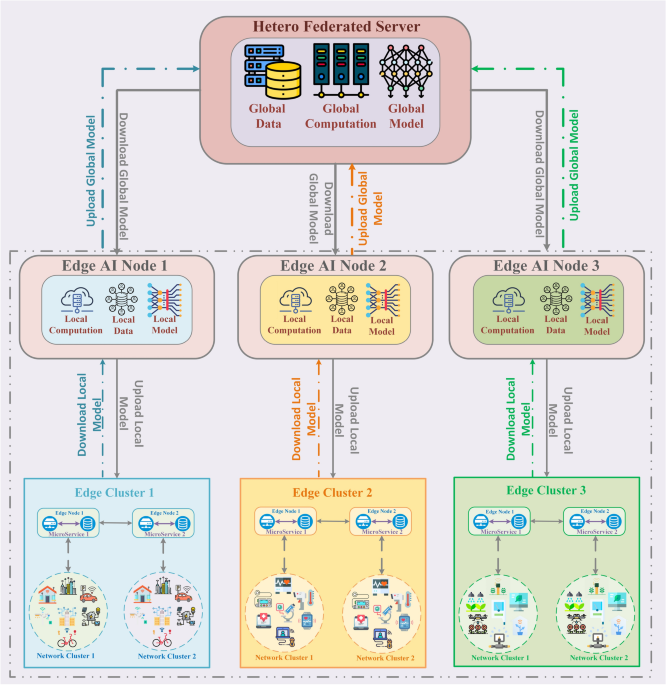Introduction The rapid increase of Internet of Things (IoT) devices and transportable technology in recent years has led to an exponential increase in application data generation1. According to a Cisco report2, around 2.32 zeta bytes of data are produced daily at the network edge of 2023. This enormous volume of edge data has driven the

What surprised me most after 500 editions of Exponential View
After nine years of writing Exponential View and 500 Sunday editions at technology’s frontier, I’ve witnessed the future unfold in ways that defied everyone’s expectations—including my own. What we thought we knew about innovation and progress has been consistently upended, revealing just how unpredictable exponential change can be.
Here’s what surprised me most:
-
What AI looks and feels like
-
How Nvidia captured the market
-
Autonomous vehicles actually working
-
The speed of knowledge explosion
-
How culture wars get in the way of technology innovation
-
The energy sector — where do I even begin?!
-
Our (mis)understanding of technology as a force for societal change
-
Founders continue to surprise me in the best ways.
Let me take you through each…
One of the biggest surprises in this journey has been witnessing what AI has become—and how quickly it has changed. If you had asked me in 2014 or 2015 what powerful AI might look like, I would have echoed the sentiments of the deep learning community: that real breakthroughs were still many years away. AlphaGo’s victory over Lee Sedol in 2016 seemed like a shot of steroids speeding things up. But that was a scientific milestone. It wasn’t, you know, the ChatGPT moment.
Here we are, just a decade later, and it’s large language models that have taken us to the races. Starting in 2017, transformer models began to show a new type of capability which progressive scaling has tuned into experiences that would have seemed like science fiction ten years ago. I didn’t imagine it would cost me a few cents and a couple of minutes to create videos of me speaking Polish or Korean. Or that I’d regularly upload hundreds of pages of academic research and query it conceptually, analogically or comparatively for the cost of a Netflix subscription.
My day-to-day life has changed. I now rely on Perplexity and Claude as cognitive assistants and on Lindy, Granola and Otter to support my meetings. I’m still booking my own travel though.
I’m uncomfortable with the term “artificial general intelligence” but it’s widely used in the market so I’ll use it here. People are getting more bullish on timelines for AGI on the forecasting platform Metaculus. Four years ago the community predicted general AI by 2051; today that date is 2032. Every year that passed, the forecast moves six years forward.

One of the major differences after ChatGPT is that AI is noticeable in the day-to-day. After the deep learning wave and AlphaGo’s success, apart from barking at Alexa or throwing on a Snapchat filter, the average consumer didn’t really interact with AI systems. Of course, banks and retailers and social networks were using those technologies behind the scenes. But it wasn’t in your face the way a chatbot or self-driving car are nowadays.
I still remember the moment I recognised Nvidia’s importance, although I didn’t first comment on Jensen Huang’s AI opportunity until 2016. The 2012 AlexNet breakthrough demonstrated the power of GPUs for deep learning. By 2015, gamers were crying out for the lack of GPUs. But even I didn’t foresee the depth of Nvidia’s influence. I assumed that AlexNet’s success would trigger intense competition. Back in 2017, I wrote:
Graphic processing units, whose manufacture is dominated by Nvidia, were the first to bloom. But increasingly we are seeing a growth in new silicon architectures, optimised for deep learning tasks.
By building a comprehensive platform around CUDA, they created what some might call an “almost lock-in” effect leading to massive buy-in. The competitive surge never materialized the way I expected, underscoring just how valuable it is to control both the hardware and software stack in the world of exponential technologies.

Autonomous vehicles have been another area where my perspective has shifted dramatically over time. In 2015, I didn’t have a strong view on autonomy, but by 2016, I became incredibly optimistic. I thought we were on the brink of a revolution. But as reality set in and promises weren’t fulfilled, I became increasingly bearish.
It’s only in the past few months that I’ve really changed my mind. You can see me enjoying my first Waymo ride here 🙂 The lesson? Even with exponential technologies, the point at which a technology becomes usable is often hard to predict.
One of the clearest markers of the acceleration I’ve witnessed is in the realm of research. Back in the early days of Exponential View, I could reasonably expect to keep up with all the relevant machine learning papers on arXiv. Now? Even glancing at the index feels like an impossible task. The sheer volume of research—and the speed at which it’s being produced—is a vivid reminder of how quickly things are evolving.




